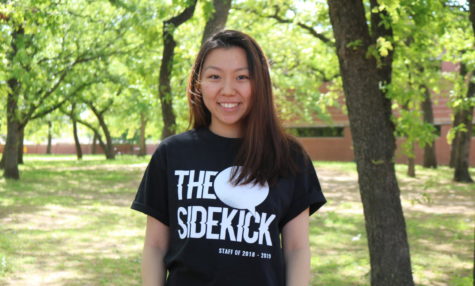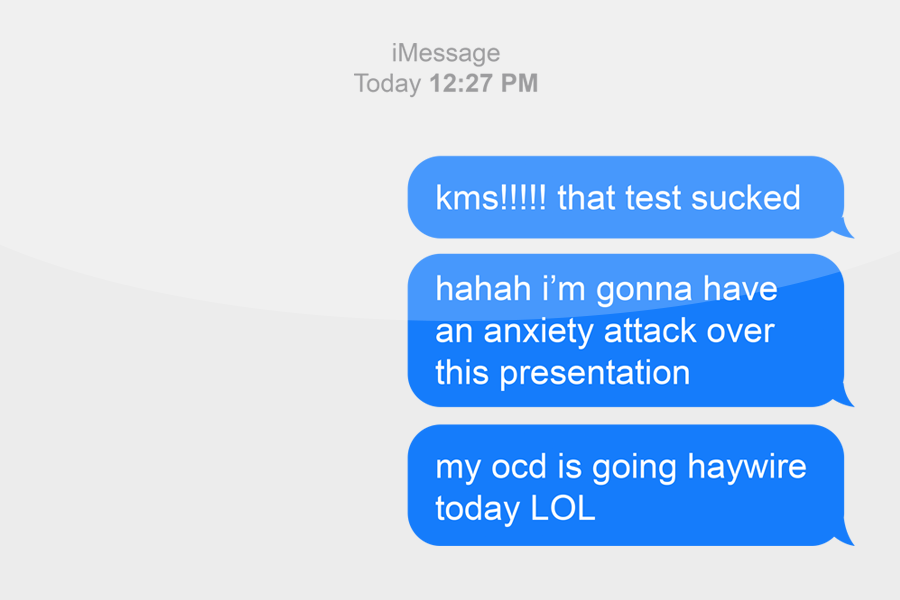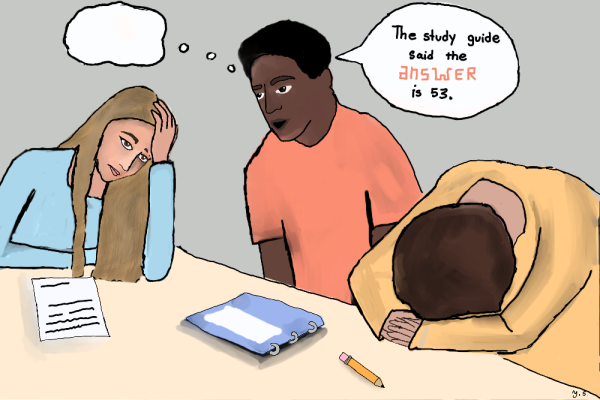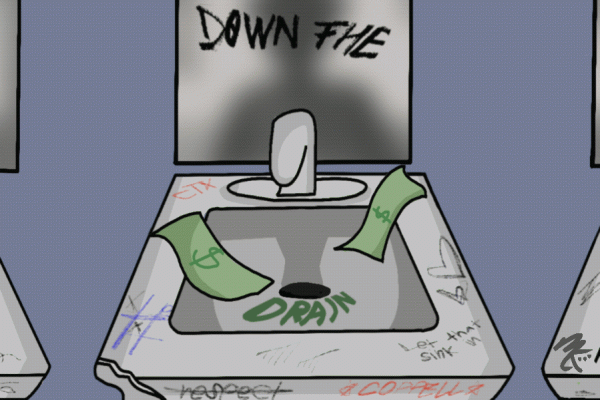Anxiety by diagnosis: where to draw the line between stress and mental illness
The oversimplification and trivialization of mental health is a commonplace practice. As a result, it has become difficult to distinguish between what is a natural reaction and what requires medical assistance.
When asked to speak on the casual culture of misused mental health terminologies, Coppell High School junior Rishi Lekkala almost rolls her eyes.
“It’s not a crime,” Lekkala said. “I’ve probably done something like that. It’s just a matter of ignorance, and not knowing the difference between experience and throwing it out second-hand, where you think it’s applicable.”
She is right. It is not a crime. Even if it were, it would hardly matter – the oversimplification and trivialization of mental health is a commonplace practice, so ubiquitously present in today’s emerging generation that the idea of policing it is utterly implausible.
Scroll through your phone, and you will be quick to find the incriminating handprints of your best friend, your boyfriend or girlfriend, maybe even your own:
kms!!!!! that test sucked
hahah i’m gonna have an anxiety attack over this presentation
my ocd is going haywire today LOL
Anxiety disorders, in particular, are referenced often.
Defined by the National Institute of Mental Health (NIMH) as fits of “excessive anxiety or worry” for prolonged periods of time, anxiety is often supplemented by restlessness, fatigue, difficulty concentrating, irritability and sleep problems.
Generalized Anxiety Disorder, Panic Disorder and Social Disorder, amongst other variations, are all serious medical conditions that can greatly inhibit the lives of those who suffer from these disorders.
However, much of the gravity of the word ‘anxiety’ has been lost. With high school students today working harder than any other generation before them, many have deviated from the whimsical old school imagery of letterman jackets and football pep rallies, moving instead to acclimate to the academically driven environment of the modern high school, ridden with standardized tests, class rank, GPA and increasingly competitive college prospects.
Stress is a natural, almost expected reaction to all of these developments.
However, stress is also exactly just that: a natural response to the unique challenges this generation is being presented by.
As the NIMH states, “Occasional anxiety is a normal part of life. You might feel anxious when faced with a problem at work, before taking a test, or making an important decision.”
Anxiety disorder as a diagnosis, on the other hand, is a different beast, involving more than temporary worry or fear. For a person with an anxiety disorder, the anxiety does not go away and can get worse over time.
CHS junior Jennie* seems outwardly perfect. With smooth blonde hair and a bright grin, she is the farthest from what typically comes to mind when the subject of anxiety is brought up.
I have actually known Jennie nearly all my life. We were never close friends, but from the relatively removed distance of a peer and acquaintance, she sparkled – literally. She added bling to the back pockets of every pair of jeans, owned a fat cat named Diamond Girl and played the vivacious Mrs. Claus in our class winter musical.
You could imagine my surprise when, after reaching out to her, I learned how dark her world could be.
Jennie was diagnosed with anxiety last year, at the end of her sophomore year. She currently sees a therapist and takes medication to keep her condition under control.
Despite struggling with symptoms for years, she was hesitant to accept help.
“Before I was clinically diagnosed, I remember just thinking, ‘I just face a lot of stress’,” Jennie said. “Every day, I hear people say ‘I’m anxious’ or ‘I’m stressed’. I thought everyone felt the way I did. When my mom suggested that maybe I go to a therapist or counselor, I didn’t want to do it. For a long time, that deterred me from finding a cure or aid for [my anxiety]. That’s a side effect of people using the word ‘anxiety’ [incorrectly].”
Speaking up and reaching out for aid is one of the greatest and most effective solutions when combating mental illness. However, amidst the ease with which words such as ‘depression’ and ‘anxiety’ are thrown around, it has become difficult to distinguish between what is a natural reaction and what requires medical assistance.
“It just feels like people can be a little inconsiderate of people who actually have anxiety,” Jennie said. “[The word] has lost sincerity and consciousness.”
Jennie is right, too, when she says anxiety has become a loose term. When the world is as interconnected and on-demand as it is today, an overload of information paired with insufficient reaction time inevitably begets desensitization. Scrolling through Twitter can expose a user to a tragic car accident in a different town, a murder crime in a different state and widespread starvation in a different country, all within a matter of 15 minutes.
There is simply not enough empathy to go around.
“If there’s no malicious intent behind [using the word ‘anxiety’], it’s fine,” Lekkala said. “And you can tell when that intent to target somebody is there. That’s when it’s not OK.”
But otherwise? There is not much else that can be done.
“Of course it’s offensive, but you can’t control people’s actions,” Lekkala said. “It’s [useless] to get hurt over someone else’s ignorance when you can’t do anything about it.”
I have to agree with Lekkala. It may not be a perfect answer, but it is also some part of the truth.
Those who are hurt by the insensitivity of others should not expect the same individuals to correct their behaviors. It is ideal of them to do so, of course, and what is objectively correct and decent, but these expectations will often lead only to more hurt and disappointment.
Instead, it is far more productive and self-empowering to rise above a poor choice of language and educate those who are unaware of the effects of their words.
* – For privacy purposes, the source’s name has been changed.
Follow Kelly Wei @kelllywei

Kelly Wei is a senior staffer, serving her third year as Editor-in-Chief. In her free time, you can probably find her hiding out in a boba cafe with her...









Niamh K • Apr 25, 2018 at 5:03 pm
It’s really nice to find that I’m not the only one that finds there to be an issue in the way our world goes about mental health. Hearing people draw their stresses out of proportions, and feeling like anxiety disorders are belittled can put those with them in an uncomfortable situation and make them feel like they can’t be taken seriously.